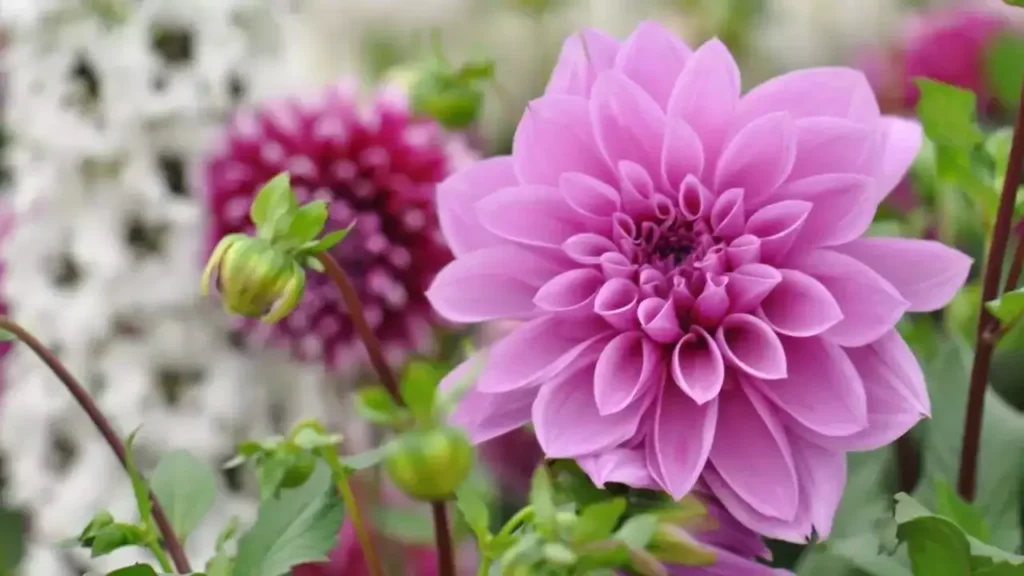Pink diddy flowers are a charming addition to any garden. They add charm with their vibrant pink colors and delicate beauty. To ensure their healthy growth, it is important to understand their sun needs. This flower thrives best when it receives the right amount of sunlight. It directly affects their blooming ability and overall vitality. We’ll explore their ideal conditions to learn how to create the perfect environment for these beautiful blossoms.
Pink Diddy Flowers Require Sunlight
Pink diddy flowers thrive in partial shade to full sun, and need at least six direct hours of sunlight per day. This ensures robust growth and vibrant blooms. The pink diddy is adaptable but its performance will diminish in shade or inadequate light.
Full Sun: the Key to Lush Blooms
- Pink diddy flower experience optimal growth when placed in full sunlight.
- The petals are more colorful and have a fuller form.
- Stronger stems: Enough sunlight makes structures stronger, making them less susceptible to damage.
- Pollinator magnetism: Sunlit blooms attract bees and butterflies. This reinforces the important pink diddy link to the ecosystem.
- Partial Shade Considerations:
- Although pink diddys tolerate partial shade but excessive shade is not tolerated:
- Weakens stem growth.
- Dulls bloom vibrancy.
- Retained moisture increases susceptibility to fungi diseases.
- Although pink diddys tolerate partial shade but excessive shade is not tolerated:
Seasonal Adjustments of Sunlight
The best growth is achieved by adjusting sunlight exposure according to seasonal variations.
- Pink diddy flowers grow best in spring and summer, when there is ample sunlight. Avoid planting in areas that are shaded by nearby structures or trees.
- Autumn and winter: The reduced sunlight requires strategic placement. Consider moving containers or reflective surfaces to sunnier areas.
The Synergy between Soil and Sunlight
The soil’s quality is also important in maximizing sunlight benefits. Pink diddy flowers thrive when these conditions are met:
- A soil that drains well is essential. Excessive water retention can damage roots.
- Nutrient-Rich Basis: Organic matter in the soil enhances sunlight’s effects and promotes healthy growth.
- Mulching: Mulching helps to maintain soil moisture without creating excessively wet conditions. This ensures that the roots receive consistent hydration.
Pink Diddy Flowers Strategically Placed
Follow these tips to maximize the sunlight exposure of your pink diddy flower:
- Avoid crowding: Maintain adequate space between plants to avoid shading.
- Beware of Tall Neighbors. Tall plants can block the sunlight and stunt growth.
- Use Mobility: By planting in containers, you can adjust the sun exposure to your plants throughout the day.
The role of sunlight in blooming cycles
The sun plays an important role in the cycles of blooming for the pink diddy flowers:
- Morning Sunlight: The early morning sunlight starts photosynthesis and fuels growth throughout the day.
- Even though intense, afternoon sunlight boosts energy reserves that are essential for blooming. Partial shading can be used in hotter climates to prevent wilting.
Avoiding Common Mistakes
Avoid these common mistakes to ensure that your pink diddy flower thrives:
- Planting in Dense Shade : Lack of light inhibits photosynthesis and results in poor growth.
- Overwatering: Excess moisture, combined with limited sunlight can lead to fungal disease.
- Neglecting seasonal shifts: Failure to adjust the planting location with changing light conditions may impede growth.
Pink Diddy Flowers Benefits from Adequate Sunlight
The right amount of sun offers many benefits:
- Vivid Colors : The full sun brings out the vibrancy and brightness of the pink diddy flowers.
- Sunlit flowers are more resistant to pests and disease.
- Extended Blooming Periods – Optimal sun exposure encourages extended flowering and adds beauty to your garden for extended periods.
Companion Planting Pink Diddy Flowers
To create a harmonious garden, you need to pair pink diddy with plants that are compatible.
- Lavender: It matches their soil and sunlight needs, while adding a fragrant note.
- Echinacea: Enhances their height, and attracts pollinators that are similar.
- Coreopsis is another sun-loving plant that creates an attractive contrast.
Tips to Success
How to keep pink diddys thriving
- Rotate positions: Regularly rotate their position to maximize the sun exposure when seasons change.
- Monitor soil moisture: Maintain a balance between the need for sunlight and the watering of the plants to avoid stressing the plants.
- Reflectors can be used in low-light areas to help direct sunlight towards shaded areas.
The conclusion of the article is:
Pink diddy flowers thrive in areas with plenty of sunlight. They need at least six to eight hours per day. Adequate sun exposure is closely linked to their growth, vibrant flowers, and resilience. Understanding their sun needs and creating favorable environments will allow you to enjoy their enchanting beauty while supporting their vital role as pollinators. To maintain a garden full of the charming charm of diddy and bee balm flowers, prioritize soil quality and season adjustments.



